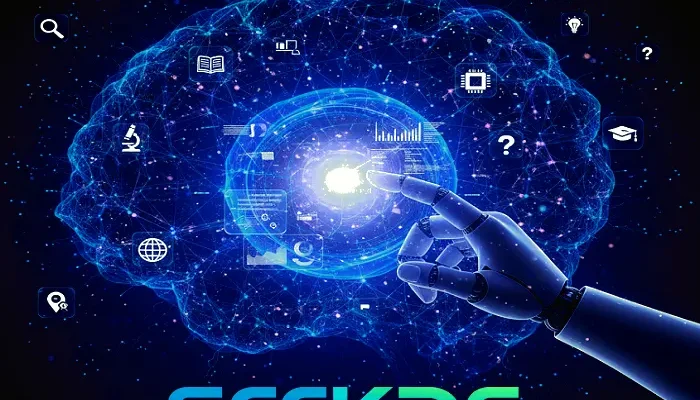
The internet keeps growing, but finding the right information hasn’t gotten any easier. Each year, thousands of platforms promise to make searching smarter — yet many end up cluttered or shallow. Then came Seekde, a name quietly spreading across tech discussions for doing something different. It doesn’t just fetch information; it teaches you how to think about it.
When I first came across Seekde, the tagline that caught my eye was: “A digital ecosystem for intelligent discovery.” That line might sound lofty, but as I explored, I realized Seekde’s ambition isn’t to replace search engines — it’s to reimagine how we discover, connect, and learn online.
Let’s dive deep into what Seekde is, how it works, and why it might shape the next phase of digital intelligence.
What Is Seekde?
At its core, Seekde is a next-generation digital platform designed to simplify how people explore knowledge. Instead of being a plain search tool, it combines AI, semantic analysis, and contextual learning to create a personalized space for discovery.
Traditional search engines work like index cards — they find the word you type and return links. Seekde, on the other hand, tries to understand your intent. If you search for “climate-driven agriculture,” it doesn’t just show pages with those words. It identifies related themes — sustainability, soil data, agri-tech, water preservation — and builds a web of connected ideas.
That’s the big shift: Seekde focuses on meaning, not just matching.
More Than a Search Tool
Think of Seekde as a hybrid between:
- A smart research assistant
- A personalized learning engine
- A knowledge visualization platform
It gathers information from multiple verified sources, analyzes relationships between topics, and then presents them in clean, human-readable formats. You don’t have to open dozens of tabs — you see context in one place.
In simple words: Seekde turns the chaos of the internet into clarity.
How Seekde Works
While the company hasn’t revealed all technical details, Seekde’s public descriptions and user behavior suggest it runs on three key pillars: semantic AI, adaptive learning, and knowledge mapping.
1. Semantic AI — Understanding What You Mean
Seekde’s AI interprets your query’s meaning, not just the words. If you ask, “How does electric mobility affect urban planning?” Seekde connects “electric mobility” with transportation policy, sustainability goals, infrastructure design, and energy distribution — building a richer network of related insights.
This semantic layer gives Seekde a human-like sense of context. It knows that “solar efficiency” and “photovoltaic performance” refer to similar ideas even if the words differ. That’s a leap beyond basic search.
2. Adaptive Learning — Growing With You

Every time you interact with Seekde, it learns what type of results you prefer. Over time, it understands your field, tone, and focus — whether you’re a student, researcher, or professional.
For instance, if you often explore AI ethics, Seekde may start showing emerging studies or thought leaders in that space before you even search for them. This adaptive behavior transforms Seekde from a static engine into a dynamic digital mentor.
3. Knowledge Mapping — Seeing the Bigger Picture
One of Seekde’s most fascinating aspects is its knowledge maps. Instead of showing a flat list of results, it visualizes how ideas relate.
Let’s say you search for “quantum computing.” Seekde might show:
- Core areas: qubits, entanglement, decoherence
- Connected technologies: cryptography, AI modeling, nanotechnology
- Practical applications: drug discovery, finance modeling, logistics optimization
This map helps you explore not just the “what,” but also the “why” and “how” — exactly how humans naturally learn.
What Makes Seekde Different
Plenty of AI tools claim to be “smarter” or “contextual,” so why are tech analysts paying attention to Seekde? It’s the way it blends technology with human curiosity.
Here are the qualities that make it stand out:
1. A Human-First Interface
Seekde’s dashboard avoids clutter. Information isn’t buried in ads or pop-ups — it’s structured like a story. Each section builds upon the previous one, guiding you through a logical flow.
2. Context Over Clicks
You don’t need to click ten links to piece together one idea. Seekde summarizes, connects, and contextualizes. It’s built for people who value understanding, not just answers.
3. Continuous Discovery
Unlike static searches, Seekde remembers. It can show what’s new since your last session or how discussions around a topic have evolved. For professionals tracking trends, this is invaluable.
4. Multi-Disciplinary Learning
Seekde’s biggest advantage is how it breaks silos. Whether you’re in medicine, tech, design, or philosophy, it connects patterns across industries — encouraging cross-disciplinary insight.
5. Clean and Credible Content
Seekde seems focused on source quality, drawing from trusted publications, journals, and verified datasets rather than random blogs. That reliability adds professional credibility.
The Vision Behind Seekde
Seekde was built around a simple but powerful vision: make knowledge flow smarter, not faster.
The modern web is full of noise — millions of results, few real insights. Seekde wants to reverse that by focusing on meaning, curation, and personalization.
Its creators have hinted that Seekde is not merely a product, but a framework for intelligent knowledge management — something that could eventually be integrated into education systems, research hubs, and enterprise data solutions.
The concept aligns with the global shift toward contextual AI — tools that don’t just provide data, but understand purpose.
Real-World Uses of Seekde
Let’s bring this down to real scenarios. How can Seekde actually help someone?
1. For Students and Researchers
Researching a complex topic often feels like juggling multiple browsers, PDFs, and notes. Seekde condenses that process. Its semantic AI connects concepts across disciplines, helping students form a deeper understanding of subjects.
For example, a student researching “renewable energy policy in Europe” can instantly see related legislation, case studies, and expert commentaries — all within a single map.
2. For Content Creators and Marketers
Writers, marketers, and SEO strategists constantly need fresh ideas. Seekde simplifies brainstorming. If you’re writing about “AI in healthcare,” Seekde might highlight underexplored angles like “patient ethics,” “data interoperability,” or “medical imaging startups.”
This saves hours of manual keyword searching and helps creators build authority through meaningful topics.
3. For Businesses and Innovators
Companies can use Seekde to monitor trends and competitors. The platform’s ability to connect industry news, patents, and research means decision-makers can spot shifts early.
A business developing eco-packaging, for instance, could track materials innovation, recycling technologies, and global regulations — all visually linked on Seekde.
4. For Lifelong Learners
Not everyone using Seekde is researching or marketing — some simply love learning. Seekde provides a guided journey through topics you’re curious about, turning browsing into structured discovery.
Strengths of Seekde
Here’s what users and early reviewers have appreciated most:
- Clarity – Seekde avoids overloading users with irrelevant links.
- Depth – It goes beyond definitions and provides conceptual depth.
- Efficiency – It reduces research time by structuring information.
- Personalization – Learns your style and interest zones.
- Innovation – Combines AI reasoning with human learning principles.
Challenges Seekde Faces
Of course, no platform is perfect. Seekde’s ambition is huge, and it comes with natural challenges:
1. Building Trust at Scale
To compete with established giants, Seekde must prove consistent accuracy and unbiased results. People need to trust the platform’s judgment as much as Google’s scale.
2. Data Management
Handling vast datasets while maintaining speed is no small feat. Seekde’s real test will be managing large query volumes without compromising performance.
3. Avoiding Over-Personalization
While adaptive learning is powerful, too much personalization can create “echo chambers.” Seekde must balance custom results with open discovery.
4. Monetization and Accessibility
Will Seekde remain free for individuals, or move toward enterprise subscriptions? The pricing model could shape its future reach.
5. Competing With AI Chat Systems
Chatbots like ChatGPT or Perplexity already answer questions conversationally. Seekde needs to show why its mapping-first approach gives users better understanding than simple chat summaries.
How Seekde Fits Into the AI Landscape

The digital ecosystem is changing fast. Seekde isn’t the first AI-driven discovery platform — but it’s carving its own identity.
Compared to Search Engines
Search engines deliver data. Seekde delivers direction. You go to Google to find; you go to Seekde to understand.
Compared to AI Chatbots
AI chatbots generate responses but often lack transparency. Seekde shows you the sources, the relationships, and the context — so you can verify, not just believe.
Compared to Learning Platforms
Unlike Coursera or Khan Academy, Seekde doesn’t create courses — it helps you self-teach by connecting dots across open knowledge.
In short, Seekde doesn’t fight these tools. It complements them. It’s a digital layer that sits between data and understanding — guiding users toward clarity.
Seekde’s Future Potential
If Seekde continues evolving, it could expand far beyond a web platform. Here’s what its future could look like:
1. Integration With Education Systems
Imagine universities using Seekde as a research companion — where students visualize entire academic fields, track citations, and connect related papers effortlessly.
2. Enterprise Knowledge Engines
Companies could use private Seekde versions to manage internal data, reports, and insights — transforming chaotic file storage into searchable intelligence.
3. Voice and Visual Search
Seekde could integrate voice queries or even visual recognition — “show me how this concept connects” — enabling intuitive exploration.
4. Community Collaboration
Future versions could let users contribute notes, share connections, or co-create public knowledge maps — turning Seekde into a social discovery space.
Why Seekde Feels Timely
We live in an era of information overload and attention scarcity. The average internet user now spends more time sorting through noise than actually learning.
Seekde addresses that pain point. It’s built for focus — for depth instead of distraction. That’s why educators, analysts, and creators are watching it closely.
The idea of a digital assistant that not only finds but also guides aligns perfectly with where the web is heading — personalized, contextual, human-centric.
The Human Side of Seekde
Technology aside, Seekde’s charm lies in its human philosophy. It treats curiosity as a journey, not a transaction.
When you search, Seekde doesn’t assume you just want a fact — it assumes you want understanding. That single design mindset changes the user experience entirely.
I’ve always believed that the next generation of AI tools should make humans more thoughtful, not more dependent. Seekde seems to share that belief. It’s a tool designed to amplify human learning, not replace it.
Conclusion
Seekde isn’t just another digital platform; it’s a shift in how we approach information. It blends AI, semantics, and human curiosity to build an experience that feels personal, intuitive, and intellectually rewarding.
Where traditional search ends, Seekde begins — guiding users through the connections between ideas. Whether you’re a student, researcher, marketer, or lifelong learner, Seekde offers a smarter, cleaner way to explore knowledge.
In a noisy internet, that’s no small achievement. If Seekde stays true to its vision — transparency, trust, and meaningful discovery — it could easily become the next milestone in digital learning.
